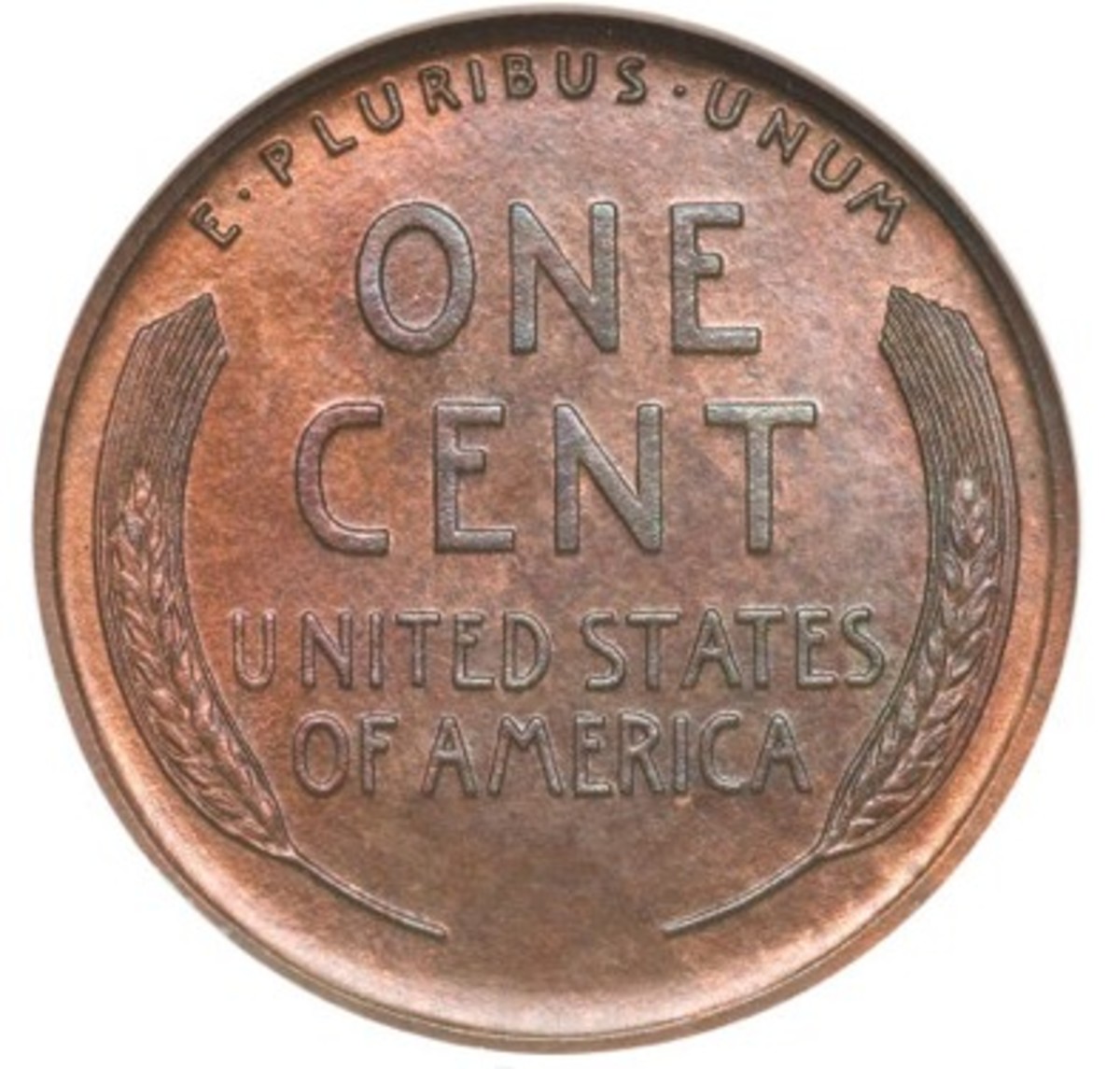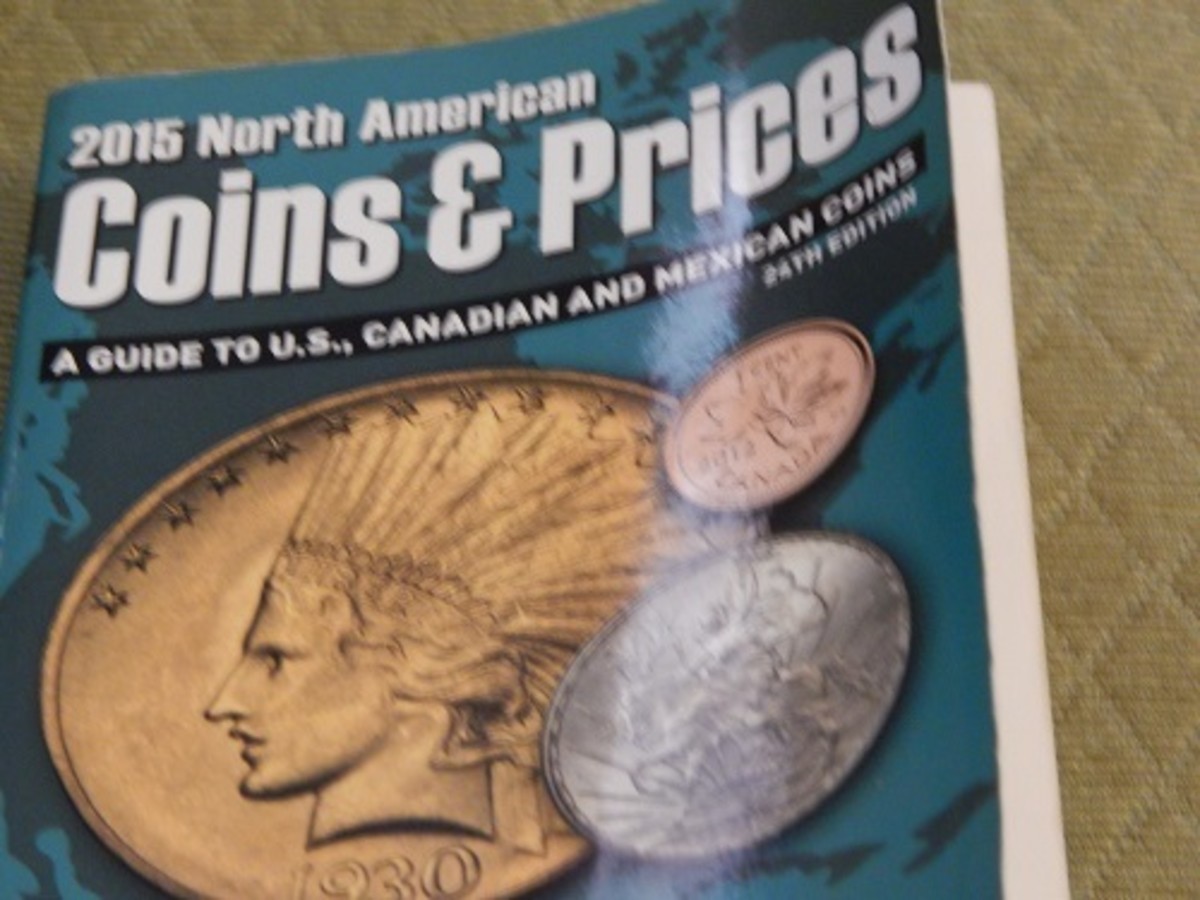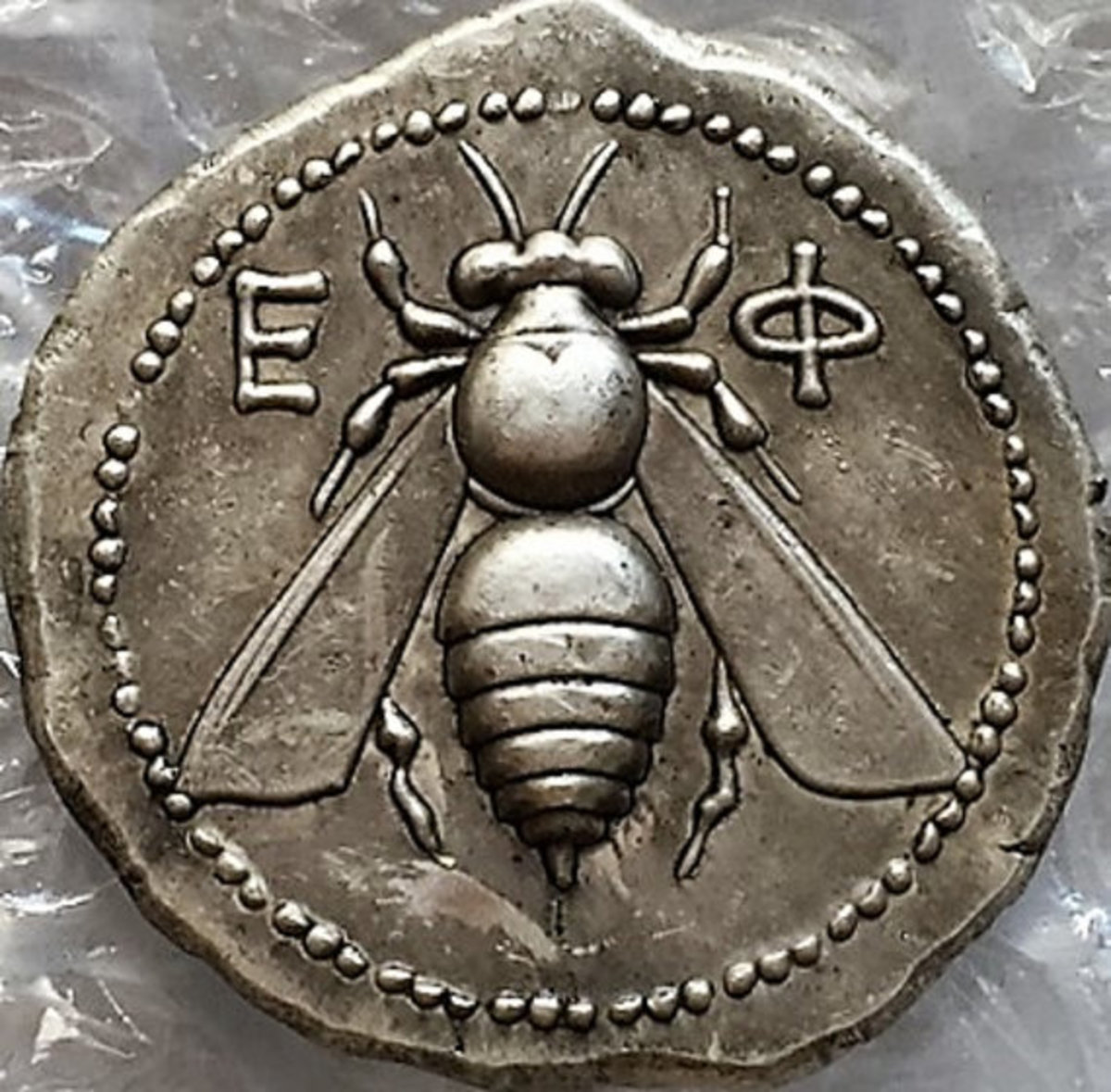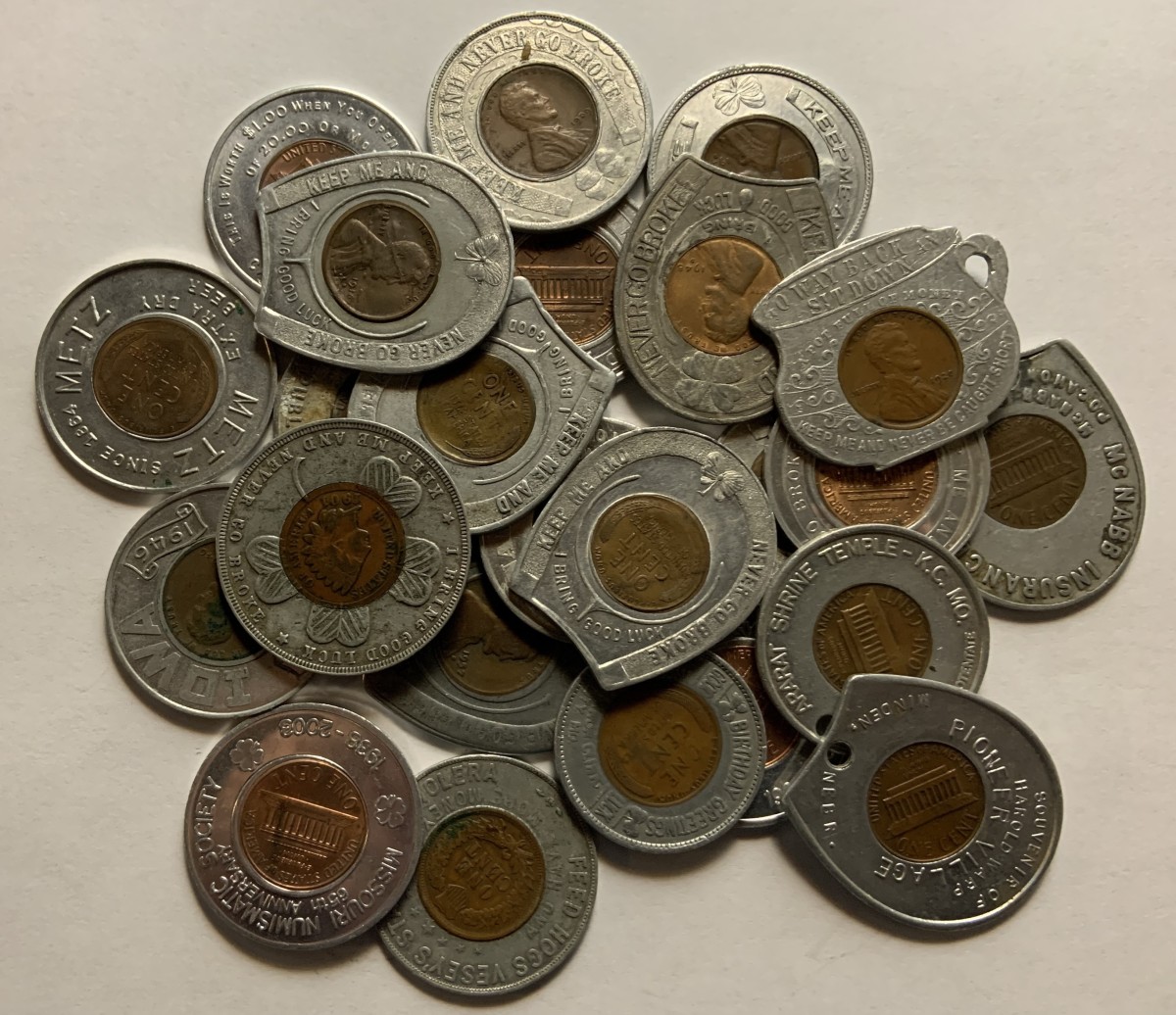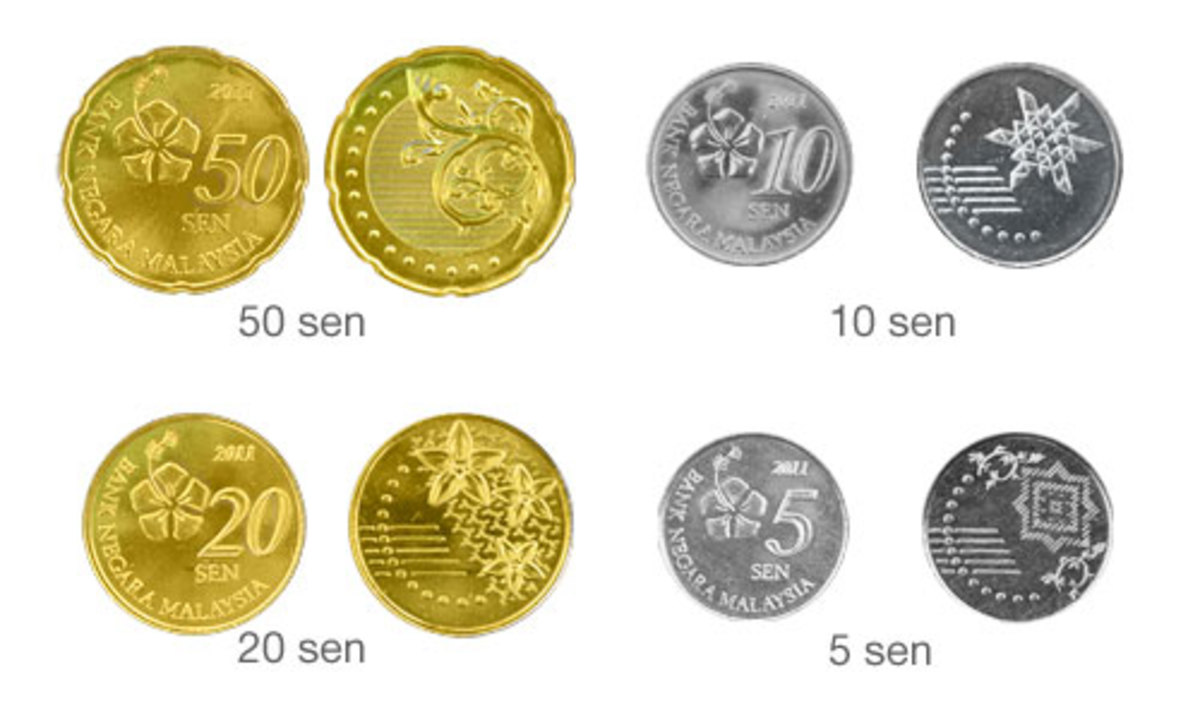American Half Cent copper coins
United States Half Cents were minted from 1793 to 1857.
The initial design was very simple: a head of liberty on the obverse with the word "Liberty" and the date. The reverse has a laurel wreath of leaves and berries tied with a bow, the words "United States of America" , "Half Cent" and "1/200". The edge has an incuse "TWO HUNDRED FOR A DOLLAR" with two leaves.
The design of 1794 was similar, but Liberty now faced right and was larger. This design continued until 1800, when the depiction of Liberty was again changed. In 1809, the so-called "Classic Head" design appeared - Liberty again faces left and has gained weight!
The "Braided Hair" design appeared in 1840 and continued until the end of the series in 1857.
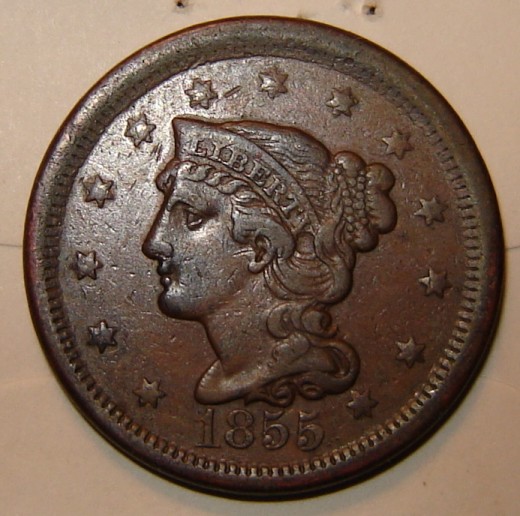
This 1855 Half Cent is one of the very few pieces I kept when I sold off the coin collection I had begun when I was a young boy. I was always very interested in early American copper coinage, both large cents and the smaller half cent.
Only 56,500 of these half cents were produced by the U.S. Mint in 1855. Indeed, less than 8 million of this denomination were minted in all the years of their production. Never popular, the demand for these coins was highest in the early 1800's; by the 1850's very few were being made.
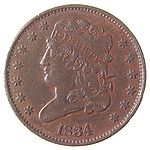
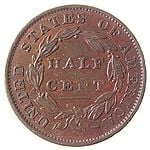
Due to difficulties obtaining copper and lack of demand, no half cents were minted in 1812 and mintage did not resume until 1825. What copper was available was used for Large Cents, indicating that the half cent was less popular even then. The mint often had large quantities in its vaults due to the lack of demand.
By the way, these coins were 100% copper. Today's one cent pieces are zinc with a copper coating.
You might think that the low demand was because of the low face value, but the purchasing power of a half cent in 1855 was roughly equivalent to a dime today (2010). An unskilled workman earned about seven cents an hour then (see MeasuringWorth.com ), so this was not an insignificant amount of money. It may have been that there were simply enough of these coins already in circulation. However, then as now, inflation was steadily eroding the purchasing power of these small coins, and their size (just slightly smaller than today's quarter in diameter, but much thicker and therefore weighing almost as much) made them unpopular. In several years, they were produced only for collectors, with none going to general circulation.
This is the smallest denomination ever officially minted by the United States. There was never coinage of smaller value. The Coinage Act of 1792 referenced "milles" as one tenth of a cent (approximately equivalent to three cents now), but no coins of that value were ever authorized or made.
(Source: http://en.wikipedia.org/wiki/Coinage_Act_(1792))
That the money of account of the United States shall be expressed in dollars or units, dismes or tenths, cents or hundredths, and milles or thousandths, a disme being the tenth part of a dollar, a cent the hundredth part of a dollar, a mille the thousandth part of a dollar, and that all accounts in the public offices and all proceedings in the courts of the United States shall be kept and had in conformity to this regulation.[3]
So why were these coins made? There was a popular economic theory that smaller coin values would bring lower prices, which would help the poor. The poor apparently didn't agree.
Because of their relative scarcity, these coins are fairly costly now. I paid $10.00 for the example you see in the photo, but a similar coin could cost $70.00 or more today. The earlier dates, and especially those before 1800, are particularly hard to find and quite expensive.
The 1855 would be harder to find if it were not for the fact that a large number turned up in a hoard. Another of the more commonly seen dates is 1853; the higher availability of this date is not easily explained as no hoard is known. A hoard of 1828 half cents was discovered in 1894 and thousands of 1833 and 1835 coins turned up in the 1930's. There were other hoards.
Mintage figures of 1831 and 1836 are suspect because some were restruck in the Mint by a night watchman, Theodore EckFeldt, in the 1850's.
A number of dates are listed as "Restrike" or "Mickley" in catalogs. These were produced by Joseph Mickley who had acquired rusted but quite usable dies sold by the Mint as scrap in the late 1850's. As copper coins were not classified as legal tender at that time, this was not actually illegal (that changed in 1933). Most of those dies were bought back by the Treasury in 1878 and presumably destroyed, but supposedly the 1823 dies still exist.
Half cents are interesting because of their checkered history and scarcity and perhaps because the hoards make finding high quality examples easier than for some other coins. I can look at that 1855 coin and imagine that it could have been spent by Abraham Lincoln or clutched by a run away slave. Circulated coins always have a past, but we usually have no way of knowing what it was.


